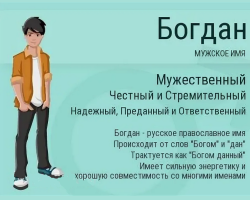The article will tell you what is happening in the body after surgical intervention, why you need to lay seams and how soon they need to be removed.
Content
- On what day is the seams and whether it hurts after the operation of cesarean section, childbirth, the episiotomy of the perineum, on the cervix?
- On what day is the seams and whether it hurts after the operation of appendicitis, hernia, laparoscopy?
- On what day is the seams and whether it hurts on the gum after removal, tooth implantation?
- On what day is the seams and whether it hurts from the wound on the arm, leg, face?
- On what day is the seams remove and whether it hurts after rhinoplasty, blepharoplasty?
- Video: "Removing surgical seams"
On what day is the seams and whether it hurts after the operation of cesarean section, childbirth, the episiotomy of the perineum, on the cervix?
Any surgical intervention leaves behind a trace - a section sewn by special threads or fastened with brackets. The speed and ease of healing of any scars depends on how difficult and deep the problem was.
The most common operation in the world is a “cesarean section”, which in most cases is simply a necessity (the difficult position of the child in the womb, entering the umbilical cord, the narrow pelvic bones of the mother). This intervention is characteristic of a lane cut in the lower abdomen (horizontal or vertical).
The seam on the incision after the cesarean section is superimposed in the maternity ward. A surgeon for general anesthesia imposes the seams, and during the entire period of stay in the maternity hospital, the nurse always treats the seam with antiseptic agents, changing the bandage.
If the seam is applied with ketgut threads, it is not necessary to remove it, since the thread is absorbed over time (it is made of natural material and is absorbed from 60 to 80 days completely without a residue). If the seam is applied with silk threads and brackets, their can be removed after 5 or 7 days, depending on the complexity of the healing course.
After Caesarean, a scar is formed, which begins to form by about the 7th day. The seam should not be wetted with water for the first week, and therefore you can take a shower only after 7 days. It is worth knowing that this intervention is very painful, because as a result of the operation, all layers of the abdominal wall are violated.
In the case of natural birth, the situation is a little simpler. However, it should be noted that every woman’s childbirth can occur in different ways: difficult or easy. It all depends on the physiological structure of the woman, her experience, the number of births in the account, the state of health, the ability to push and the correct behavior of the medical team during childbirth.
Episiotomy - This is the incision that a woman is made in the crotch (in the vagina) in order to facilitate the process of childbirth. As a rule, this incision is made after the introduction of a local anesthetic, if the birth is “fast” for this.
The seams after childbirth are usually removed on 4-5 days, if fabrics heal well and there are no complications. In some cases, the process can be delayed on 7-10 days maximum. In the case when a woman cannot be born, relax, or with accelerated or caused by the birth of the cervix is \u200b\u200bnot revealed, the process of her rupture is irreversible. Then the seams are applied to it in the same way, their healing lasts up to 7-10 days.

On what day is the seams and whether it hurts after the operation of appendicitis, hernia, laparoscopy?
Such a disease as appendicitis is quite common in all segments of the population: children, adults, men and women. The disease is treated only with the help of surgical intervention. At its core, appendicitis is an inflammatory process that occurs in the "cecum", or rather in its process, the functions and the purpose of which has not yet been fully studied.
Anything can provoke an inflammatory process:
- Mechanical bruise
- Infection in the body
- Blood circulation in the body
- Endocrine system disorders
- Disruption of the digestive tract
Important: statistics proves that women are more inflamed by inflammation of the appendicitis than men. The disease is aggravated most often at the age of 20 to 40 years.
Emergency cutting of appendicitis will help to completely eliminate the problem. As a rule, this intervention does not carry over serious consequences and danger. If you cut the appendicitis immediately after exacerbation, recovery and improve the condition of the patient will follow the next day.
A cut for removal of the apendix is \u200b\u200bmade in the lower abdomen on the right. After excision of the skin, a scar remains, which requires proper care. The length of the scar, on average, is 3-4 cm. So that the incision looks neat and easily healing, the doctor requires responsibility, professionalism, experience.
If after the operation there were no complications (fever, infection, microbes entering the wound) and the scar heals well, the seams are allowed to remove the seams after 10-14 days. If the doctor imposes seams from the catgut threads, then their absorption occurs during 2-3 months. For a period of 10-14 days, the fabric will recover. But it is important to know that even after removing the seams, the patient needs to be on a sparing and inactive mode for about 6 weeks.
Another surgical intervention that can be performed in the abdomen is “cutting out” a hernia. “A hernia” is a disease manifested by the protrusion of internal organs (intestines) from the cavity in which they were destined to be. This can happen for several reasons, but treatment always provides for an operation as a result of which plastic is performed. Too much protrusion is reduced surgically.
In the case of “light” operation and imposing seams from silk threads or brackets, their removal occurs in a week. The seam removal procedure itself occurs quickly enough within a few minutes. It is worth noting that it is quite unpleasant. The bandage, which is customary to wear after surgery and in the rehabilitation period, is not worth it after removing the seams, it is worn to the tone of muscle mass of the body in the area of \u200b\u200bthe operation. In addition, the gear itself will hold the bandage so that he could not disperse after removing the seams.
Laporoscopy is a minimum surgical intervention that is necessary in order to establish health problems and bring the body minimal damage. Laporoscopy is carried out by introducing special spokes (surgical tools). However, this intervention also requires imposing sutures for speedy healing
As a rule, scars remain small enough. You can apply the seam after laporoscopy with ketgut or silk threads. The latter can be removed in a week. But, it all depends only on the individual characteristics of a person and the course of his disease. To say exactly how soon the seam can be removed, only the surgeon itself can say.
IMPORTANT: Any scar carried out as a result of surgical intervention, canopy or as a result of laporoscopy, requires appropriate care: antiseptic treatment, compliance with the body calm, compliance with the diet and attentive observation of the attending physician, nurses.

On what day is the seams and whether it hurts on the gum after removal, tooth implantation?
The tooth can be removed only when it is destroyed, there are inflammatory and putrefactive processes in it, it hurts due to the inflamed nerve, poses a threat to neighboring teeth. Only a dentist with a surgical license can tear out a tooth. Erasing tooths can occur in both state and private clinics.
It is worth noting that most often people tear out “wise” teeth due to the fact that they bring them discomfort and pain. Erasing the upper teeth is slightly easier than the lower ones, but, nevertheless, such an intervention requires a number of important measures.
Erasing tooth occurs under anesthesia. In the process of tearing the tooth, a person can feel only pressure, pulling sensations and crackling (if the doctor breaks a “complex” tooth into two parts to pull out). Pain after tearing the tooth comes only when the effect of painkillers ends. But, a good and attentive doctor, will always prescribe to its patient taking additional drugs that improve well -being and dull pain.
In the case of tearing the lower teeth (and especially wise) there is a probability of frequent bacteria of the wound, and therefore (to avoid infection) the doctor imposes the seams. So the gums are more likely heals and fuses, does not bleed much and does not cause discomfort to a person.
After the tooth is removed, the doctor should cleanse the wound from excess torn slices of the gum, check for the presence of residual fragments of the tooth, dull bleeding with a swab and carefully sew it up. After 2-3 days, the patient comes to the doctor in order to exclude the presence of an inflammatory process. You can remove the seams already on 6-7 days. By this time, the gingival heals and fuses.
Removing such seams almost painlessly. The patient only feels the moment of cutting the thread and the sensation of an elongated thread (fishing line) from the gums. This is not painful because the thread itself is very thin, and the gum is not the most sensitive part of the body.

On what day is the seams and whether it hurts from the wound on the arm, leg, face?
The removal of any surgical seams depends only on how difficult surgical intervention was and how hard the patient underwent the entire operation. The soreness of the place of intervention depends on how deep the incision was, what type of operation was performed.
Why impose the seams? This is a necessity. Operation - stress for the body and body. The surgeon helps to survive this stress, cope with the consequences of intervention and help recover as soon as possible. The seams are applied to the place of the cut so that the infection does not fall into the wound, does not lead to inflammation, bacteria, and protect against blood loss and death.
The healing of any section on the arm, leg, face and other parts of the body, as a rule, occurs during the first 7-10 days. That is how much time is required by fabrics in order to develop special “collagen” cells that increase connective tissue. It is worth noting that these temporary norms are very arbitrary because the younger the person, the more the healing process is faster. In the "old" organism, the process of regeneration (development of new cells) is much slower than young people and children.
Important: the removal of the seams is quite simple. The doctor or nurse, using medical scissors and tweezers, first cut the stretched threads, and then stretch them behind the tips. The process is unpleasant, but completely tolerant.

On what day is the seams remove and whether it hurts after rhinoplasty, blepharoplasty?
Blefaroplasty is a surgical intervention that is necessary in order to remove the overhanging eyelid by cutting off the “extra” fabric. As a rule, the seams during such an operation are superimposed with special catgut threads that tend to be absorbed and accepted by the body. This is done in order not to disturb the delicate skin once again, not to provoke its swelling and give pain (after all, the face is sensitive to the slightest touch).
During blepharoplasty, the cuts and seams are superimposed as close as possible to the line where the eyelashes grow. This gives the advantage to be the seams minimally noticeable. Large scars are removed by a number of cosmetic procedures that the doctor prescribes. It is by no means impossible to touch the seams and process them on your own. This should only be done to medical workers. The seams are always removed in different ways, depending on the individual characteristics of each organism and age, as a rule, the minimum is 3 weeks and the maximum of 6.

Rinoplasty is surgery designed to correct the shape of the nose. After the operation, the doctor imposes special gauze bandages impregnated with an antibiotic, as well as Langeta - a rigid gypsum bandage, which in no case should be disturbed during the healing of the wound.
Each rhinoplasty operation occurs in different ways and it all depends on the scale of surgical intervention. As a rule, after 2-4 days, the doctor can remove tampons and dressings impregnated with antiseptic agents and after 4-5 after the operation you can already remove the seams, if everything goes well and healing has not forced to wait. The wounds from the seams are absorbed independently after about 2-3 weeks. You can remove gypsum 10-14 days after surgery.








